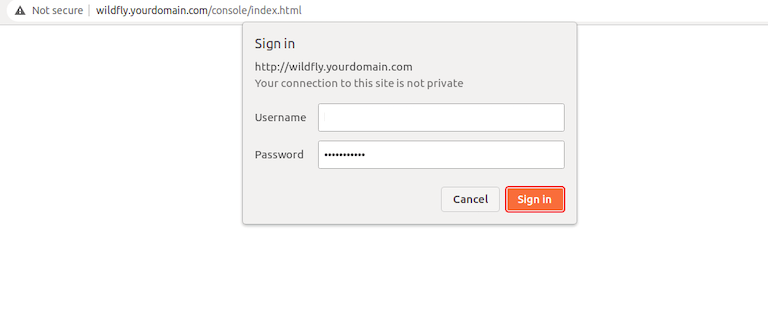How To Install WildFly on openSUSE

WildFly, formerly known as JBoss Application Server, stands as one of the most robust and feature-rich Java application servers available today. When combined with openSUSE’s enterprise-grade stability and security features, it creates a powerful platform for hosting Java-based applications. This comprehensive guide walks you through every step of installing WildFly on openSUSE, from initial system preparation to post-installation security hardening.
Whether you’re a system administrator managing enterprise applications or a developer setting up a local development environment, this tutorial provides detailed instructions tailored specifically for openSUSE distributions. You’ll learn not only how to install WildFly but also how to configure it as a systemd service, secure your installation, and troubleshoot common issues.
Prerequisites and System Requirements
Before beginning the WildFly installation process, ensuring your openSUSE system meets all requirements is crucial for a successful deployment.
Hardware Requirements
Your openSUSE system should have at least 2GB of RAM for basic WildFly operations, though 4GB or more is recommended for production environments. CPU requirements are modest – any modern dual-core processor will suffice, but quad-core systems provide better performance under load. Disk space requirements include at least 1GB for WildFly itself, plus additional space for your applications and logs.
For production deployments, consider allocating 8GB RAM or more, especially when running multiple applications or using domain mode clustering. Storage should be planned with growth in mind, as application logs and deployed artifacts can consume significant space over time.
Software Prerequisites
OpenSUSE provides excellent package management through zypper, which we’ll use extensively during installation. Ensure your system is up-to-date by running sudo zypper refresh && sudo zypper update before proceeding. Network connectivity is essential for downloading WildFly packages and dependencies.
Your firewall configuration should allow outbound connections for package downloads. We’ll configure inbound rules later for WildFly’s web interface and management console. Basic command-line familiarity and sudo privileges are required throughout this process.
User Permissions
Administrative access through sudo is necessary for system-wide installation and configuration tasks. Consider the security implications of each step, as we’ll be creating system users, modifying firewall rules, and configuring systemd services. Following the principle of least privilege, we’ll create a dedicated wildfly user rather than running the application server as root.
Installing Java Development Kit
WildFly requires Java to function, making JDK installation our first critical step.
Why OpenJDK is Required
WildFly is built entirely in Java and requires a Java Runtime Environment to execute. OpenJDK provides an open-source implementation that’s fully compatible with WildFly and receives regular security updates. Version compatibility is crucial – WildFly supports Java 11 and later versions, with Java 17 being the current recommended version.
Installing OpenJDK on openSUSE
OpenSUSE makes Java installation straightforward through its package management system. Execute the following command to install OpenJDK 17:
sudo zypper install java-17-openjdk java-17-openjdk-develThis command installs both the runtime environment and development tools. The development package includes additional tools useful for application development and troubleshooting.
Verify your Java installation by checking the version:
java -versionYou should see output similar to:
openjdk version "17.0.6" 2023-01-17
OpenJDK Runtime Environment (build 17.0.6+10)
OpenJDK 64-Bit Server VM (build 17.0.6+10, mixed mode)Configure the JAVA_HOME environment variable system-wide by creating a profile script:
sudo echo 'export JAVA_HOME=/usr/lib64/jvm/java-17-openjdk' > /etc/profile.d/java.sh
sudo chmod +x /etc/profile.d/java.sh
source /etc/profile.d/java.shAlternative Java Installations
While OpenJDK is recommended, Oracle JDK is also supported. However, licensing considerations make OpenJDK the preferred choice for most deployments. If you need to manage multiple Java versions, consider using update-alternatives to switch between them seamlessly.
Creating WildFly User and Group
Running WildFly as a dedicated user enhances security and simplifies management.
Why Create a Dedicated User
Security best practices strongly discourage running application servers as root. A dedicated user limits potential damage from security vulnerabilities and provides clear ownership boundaries for files and processes. This approach also simplifies backup and maintenance procedures.
Creating the WildFly User
Create the wildfly group and user with appropriate attributes:
sudo groupadd -r wildfly
sudo useradd -r -g wildfly -d /opt/wildfly -s /sbin/nologin wildflyThe -r flag creates a system user, while -s /sbin/nologin prevents interactive login for security. The home directory /opt/wildfly will contain our WildFly installation.
These commands create a system account specifically designed for running services rather than interactive user sessions. The wildfly user will own all WildFly-related files and processes, providing clear security boundaries.
Downloading and Installing WildFly
Now we’ll download and install WildFly itself.
Downloading WildFly
Visit the official WildFly releases page or use wget to download the latest stable version. At the time of writing, WildFly 26.1.3.Final represents the current stable release:
cd /tmp
wget https://github.com/wildfly/wildfly/releases/download/36.0.1.Final/wildfly-36.0.1.Final.tar.gzAlways verify download integrity when possible. The WildFly project provides checksums for all releases, which you can compare against your downloaded file to ensure integrity.
Extracting and Installing
Extract the downloaded archive and move it to the standard location:
tar -xzf wildfly-36.0.1.Final.tar.gz
sudo mv wildfly-36.0.1.Final /opt/wildfly-36.0.1.FinalCreate a symbolic link for easier management and future upgrades:
sudo ln -s /opt/wildfly-36.0.1.Final /opt/wildflyThis symbolic link approach allows you to upgrade WildFly by extracting new versions and updating the link, minimizing downtime during upgrades.
Setting Permissions
Change ownership of all WildFly files to the wildfly user:
sudo chown -R wildfly:wildfly /opt/wildfly-36.0.1.Final
sudo chown -h wildfly:wildfly /opt/wildflyThe -R flag recursively changes ownership of all files and directories, while -h affects the symbolic link itself rather than its target.
Configuring WildFly for openSUSE
Proper configuration ensures WildFly integrates smoothly with openSUSE’s system architecture.
Creating Configuration Directory
Establish a dedicated configuration directory following Linux filesystem hierarchy standards:
sudo mkdir -p /etc/wildflyThis directory will contain configuration files separate from the main installation, making system administration cleaner and upgrades easier.
Configuring wildfly.conf
Copy the sample configuration file and customize it for openSUSE:
sudo cp /opt/wildfly/docs/contrib/scripts/systemd/wildfly.conf /etc/wildfly/Edit the configuration file to set appropriate parameters:
sudo nano /etc/wildfly/wildfly.confKey configuration parameters include:
# General configuration for the WildFly server
WILDFLY_CONFIG=standalone.xml
WILDFLY_MODE=standalone
WILDFLY_BIND=0.0.0.0
WILDFLY_CONSOLE_BIND=127.0.0.1The WILDFLY_BIND parameter controls which network interfaces WildFly listens on. Setting it to 0.0.0.0 allows connections from any interface, while 127.0.0.1 restricts access to localhost only. Choose the setting appropriate for your security requirements.
Setting Up Launch Scripts
Copy and configure the launch script that systemd will use:
sudo cp /opt/wildfly/docs/contrib/scripts/systemd/launch.sh /opt/wildfly/bin/
sudo chmod +x /opt/wildfly/bin/launch.sh
sudo chown wildfly:wildfly /opt/wildfly/bin/launch.shThe launch script handles the complexities of starting WildFly with appropriate parameters and environment variables. Making it executable and setting proper ownership ensures systemd can invoke it successfully.
Setting Up WildFly as a systemd Service
Configuring WildFly as a systemd service enables automatic startup and professional service management.
Understanding systemd on openSUSE
OpenSUSE uses systemd as its init system, providing powerful service management capabilities. Systemd services can automatically restart on failure, manage dependencies, and integrate with logging systems. This makes systemd the preferred method for running WildFly in production environments.
Creating systemd Service File
Copy the provided systemd service file and customize it for openSUSE:
sudo cp /opt/wildfly/docs/contrib/scripts/systemd/wildfly.service /etc/systemd/system/Review and edit the service file if needed:
sudo nano /etc/systemd/system/wildfly.serviceThe service file should contain appropriate paths and user specifications for your openSUSE installation. Pay particular attention to the User and Group specifications, which should match the wildfly user we created earlier.
Managing the Service
Reload systemd to recognize the new service file:
sudo systemctl daemon-reloadEnable the service for automatic startup on boot:
sudo systemctl enable wildfly.serviceStart the WildFly service:
sudo systemctl start wildfly.serviceVerify the service is running correctly:
sudo systemctl status wildfly.serviceA successful startup should show the service as “active (running)” with no error messages. If issues occur, examine the service logs using journalctl -u wildfly.service for detailed diagnostic information.
Firewall Configuration
Securing network access to WildFly requires careful firewall configuration.
Understanding WildFly Ports
WildFly uses several network ports for different functions. Port 8080 serves the main web interface, while port 9990 provides access to the management console. Understanding these ports is crucial for proper firewall configuration.
Additional ports may be required depending on your application requirements. JMS, clustering, and remote EJB access each use specific port ranges that may need firewall exceptions.
Configuring openSUSE Firewall
OpenSUSE uses firewalld as its default firewall solution. Configure it to allow WildFly access:
sudo firewall-cmd --zone=public --add-port=8080/tcp --permanent
sudo firewall-cmd --zone=public --add-port=9990/tcp --permanent
sudo firewall-cmd --reloadThe --permanent flag ensures rules survive system reboots. The --reload command activates the new rules immediately.
For enhanced security, consider restricting management console access to specific IP addresses:
sudo firewall-cmd --zone=public --add-rich-rule='rule family="ipv4" source address="192.168.1.0/24" port protocol="tcp" port="9990" accept' --permanentThis example allows management console access only from the 192.168.1.0/24 subnet.
Initial Testing and Verification
Confirming your installation works correctly prevents future troubleshooting headaches.
Accessing the WildFly Console
Open a web browser and navigate to http://your-server-ip:8080. You should see the WildFly welcome page, confirming that the web interface is accessible and functioning properly.

The welcome page provides links to documentation, examples, and the management console. This confirms that WildFly is running and accepting connections on the expected port.
Checking Service Status
Verify the WildFly service is running without errors:
sudo systemctl status wildfly.serviceReview log files for any warning or error messages:
sudo journalctl -u wildfly.service -fThe -f flag follows the log in real-time, useful for monitoring startup processes and identifying issues as they occur.
Post-Installation Security Hardening
Securing your WildFly installation protects against common attack vectors.
Creating Administrative Users
WildFly includes a script for creating management users:
sudo -u wildfly /opt/wildfly/bin/add-user.shThis script prompts for username, password, and role assignments. Create at least one administrative user to access the management console securely. Choose strong passwords and consider implementing role-based access control for multiple administrators.
The management console provides powerful capabilities including application deployment, configuration changes, and system monitoring. Protecting access to these functions is crucial for maintaining security.
Security Best Practices
Configure WildFly to bind only to necessary interfaces. For development environments, localhost binding may be sufficient:
WILDFLY_BIND=127.0.0.1For production environments, consider using specific interface addresses rather than binding to all interfaces. This reduces the attack surface and improves security posture.
Regular security updates are essential. Monitor WildFly security announcements and apply patches promptly. Subscribe to security mailing lists and establish update procedures appropriate for your environment.
Common Troubleshooting Issues
Understanding common problems saves time during deployment and maintenance.
Java-Related Issues
Java version mismatches cause frequent problems. Ensure your JAVA_HOME variable points to a compatible Java installation. WildFly requires Java 11 or later, with Java 17 being recommended.
Verify Java configuration:
echo $JAVA_HOME
java -versionIf JAVA_HOME is unset or incorrect, WildFly may fail to start with cryptic error messages.
Permission and Service Issues
File ownership problems prevent WildFly from accessing configuration files or writing logs. Verify the wildfly user owns all necessary files:
sudo chown -R wildfly:wildfly /opt/wildfly
sudo chown -R wildfly:wildfly /etc/wildflyService startup failures often relate to incorrect systemd configuration. Check the service file paths and user specifications match your installation.
Network and Firewall Issues
Port conflicts occur when other services use WildFly’s default ports. Identify conflicting processes:
sudo lsof -i :8080
sudo lsof -i :9990Firewall rules may block access even when WildFly is running correctly. Test connectivity from the local system first, then from remote systems to isolate firewall issues.
Performance Optimization and Best Practices
Optimizing WildFly performance ensures efficient resource utilization.
Memory Configuration
JVM heap size significantly impacts performance. Edit the wildfly.conf file to set appropriate memory limits:
JAVA_OPTS="-Xmx2g -Xms1g"These settings allocate 2GB maximum heap size and 1GB initial heap size. Adjust values based on your system resources and application requirements.
Garbage collection tuning can improve performance for specific workloads. Consider G1GC for applications with large heaps or low-latency requirements.
Monitoring and Maintenance
Establish log rotation to prevent disk space issues:
sudo nano /etc/logrotate.d/wildflyConfigure backup procedures for configuration files and deployed applications. Regular monitoring of system resources helps identify performance bottlenecks before they impact users.
WildFly’s management console provides built-in monitoring capabilities. Enable JMX monitoring for detailed performance metrics and integration with external monitoring systems.
Congratulations! You have successfully installed WildFly. Thanks for using this tutorial for installing the WildFly on your openSUSE Linux system. For additional help or useful information, we recommend you check the official WildFly website.